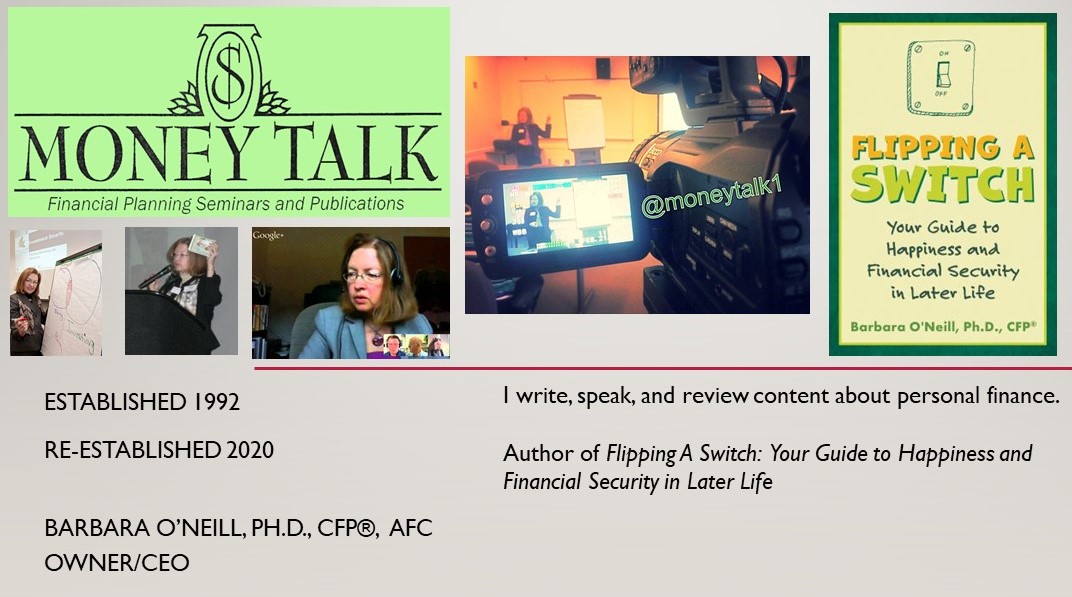Some people have recently started to invest for the first time. Others have been investing money for decades through their employer retirement savings plan or on their own.
Regardless of whether you are a
“newbie” or a seasoned investor, there are time-tested investment strategies
that have been proven over and over to produce positive investment returns over
time.
I count myself in the later camp and
have been an investor for four decades both on my own and in an employer 403(b)
plan. Below are ten strategies for successful investing that have served me
well over time:
Develop an “Investor’s
Mindset”- Expect the unknown when switching from savings
products (e.g., savings accounts and
money market accounts and certificates of deposit, a.k.a., CDs) with fixed
returns to investments (e.g., stocks and growth mutual funds) where returns are
unpredictable and variable. Savers can expect no loss of principal and regular
(albeit currently very low) interest payments. Investors must accept a
potential loss of principal and irregular payouts.
Determine Your Time Frame- Match the time frame of financial
goals to investment characteristics. Stocks have historically outperformed
other investments over long time periods and are recommended for long-term
goals like retirement. On the other hand, stocks are volatile and often lose
value during short time frames. If a
financial goal is less than 3-5 years away, select alternative investments such
as Treasury securities, a money market account, or CDs.
Dollar-Cost Average Investment
Purchases- Make
regular investment deposits at regular time intervals, such as $100 per month
in a mutual fund or 5% of pay every payday in an employer 401(k) or403(b) plan.
Doing so will reduce the average cost of share purchases over time. Mutual
funds and stocks with a dividend reinvestment plan (DRIP) or direct stock
purchase plan (DSPP) are well-suited for dollar-cost averaging.
Take Advantage of Tax-Deferred Investments- Set up investment accounts for
retirement savings where earnings can grow free of tax for decades until
required minimum distributions (RMDs) must begin at age 72. Examples include
traditional individual retirement accounts (IRAs), tax-deferred employer
retirement plans (e.g., 401 (k), 403(b), and TSP), and SEPs (for self-employed
workers).
Review Your Investment
Risk Tolerance- Consider how much loss of investment
principal (e.g., 20%) you could withstand without losing sleep. To assess your
personal preferences, take the risk
tolerance assessment from the University of Missouri to determine whether
you are a conservative, moderate, or aggressive investor.
Know Your Limits-
Never invest in securities that you do not fully understand or feel comfortable
with. If you can’t explain how an investment works in simple terms to a friend,
you probably don’t understand it very well yourself. Take a pass and never let
anyone talk you into investing beyond your knowledge level or comfort zone.
Consider Tax-Exempt
Securities- Select municipal bonds or bond funds if they provide
a higher after-tax return than taxable securities. Divide the available tax-exempt rate by1
minus your
tax bracket (e.g., 24%). This provides its taxable equivalent. For example,
a 2% tax-exempt bond provides the equivalent of 2.63% (2 divided by .76) to
persons paying income taxes at the 24% marginal tax rate.
Diversify Your Investment
Portfolio- Purchase different types of investments (e.g.,
stocks, bonds, and cash equivalent assets) or shares of mutual funds or
exchange-traded funds (ETFs) that contain many securities. Broadly diversified
index funds that track a stock market index, such as the S&P 500 or
Wilshire 5000, are another good option as a target date mutual funds that
contain different types of investments and automatically get more conservative
over time.
Increase Your Investment
Knowledge- Read periodicals like Kiplinger’s Personal Finance and The Wall Street Journal.
Other good financial information sources include workplace seminars,
blogs, podcasts, websites, certified financial planner® professionals, adult
education courses, radio and television shows, and investment clubs.
Review and Rebalance-
Read reports on the performance of your investments and replace poor
performers, as needed. Rebalance portfolio asset class weights to their target
asset allocation levels (e.g., 50% stocks, 40% bonds, 10% cash assets)
periodically. Consider repositioning assets when financial goals are achieved
or to adjust to changes in the economy, tax laws, or personal circumstances
(e.g., unemployment, divorce, or widowhood).
For additional information about
investing and common types of investments, review the Cooperative Extension Investing
for Your Future course and/or the FINRA Investor
Education Library.









